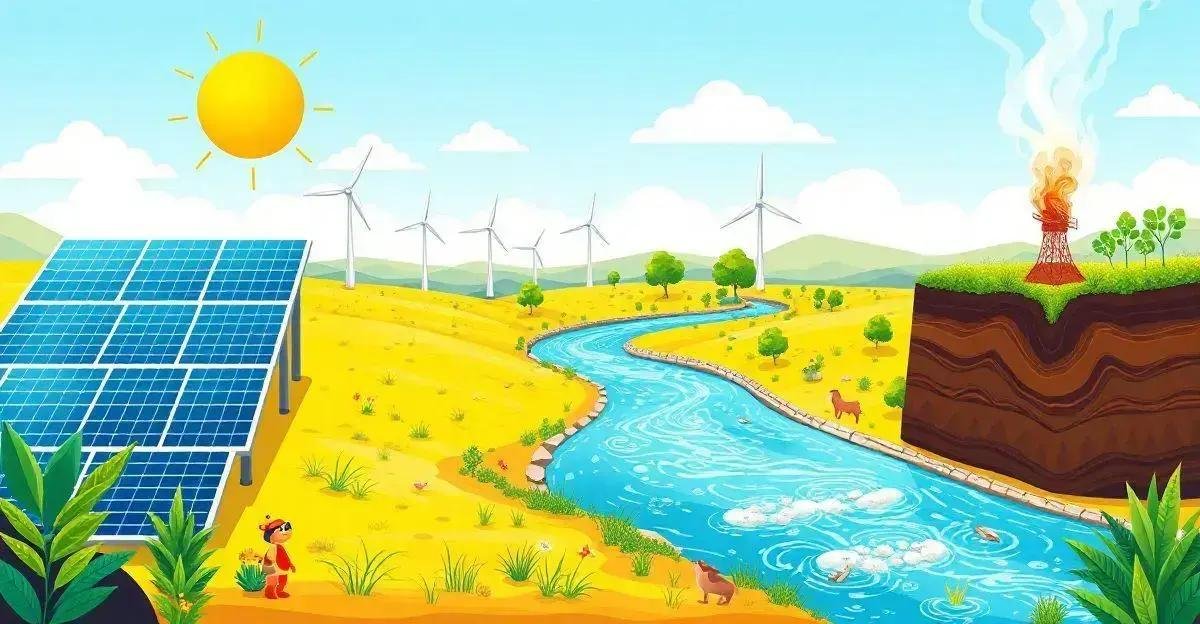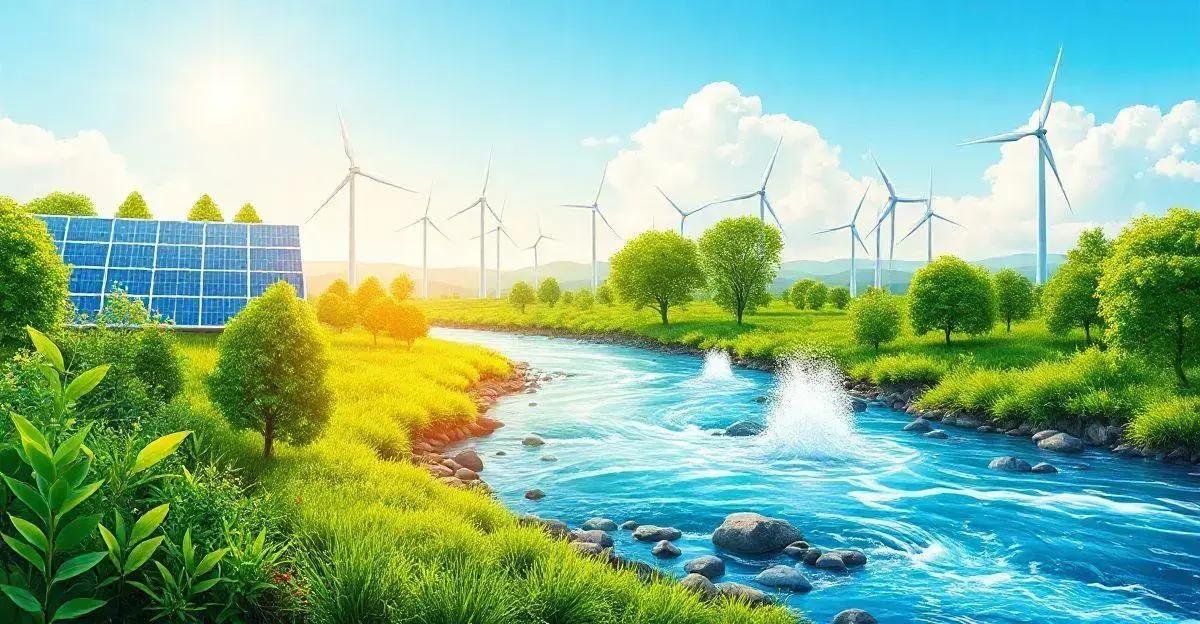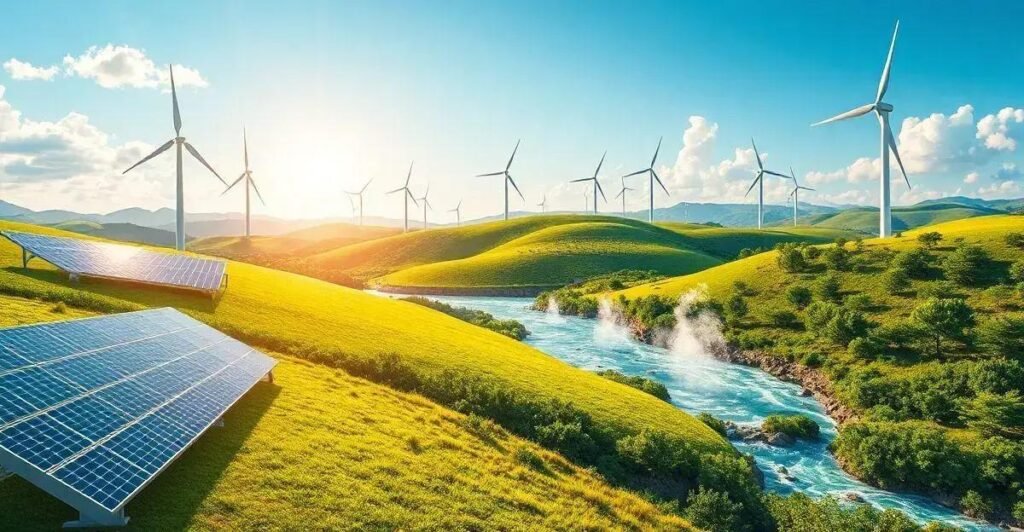As the world continues to grapple with the challenges of climate change, renewable energy trends are taking center stage.
The latest innovations in solar, wind, hydrokinetic, geothermal, and bioenergy are revolutionizing the way we produce power.
In this article, we’ll explore the most exciting trends that are driving a sustainable future and changing the game for renewable energy.
Renewable Energy Trends: The Future is Now
The renewable energy landscape is rapidly evolving, driven by advances in technology, declining costs, and growing demand for clean energy. Renewable energy trends are transforming the way we think about power generation, with a focus on sustainability, efficiency, and innovation. As the world transitions away from fossil fuels, renewable energy sources are becoming increasingly important for a low-carbon future. With the cost of solar and wind energy decreasing dramatically, these sources are becoming more competitive with fossil fuels.
Solar energy is one of the fastest-growing renewable energy sources, with deployments increasing by 20% annually. The cost of solar energy has fallen by 70% in the past decade, making it more competitive with fossil fuels. Solar energy is particularly well-suited for developing countries, where access to electricity is limited. With the development of new technologies, such as bifacial solar panels and perovskite solar cells, solar energy is poised to play a significant role in the global energy mix.
Wind power is often overlooked as a leading renewable energy source, but it’s a crucial component of a sustainable energy future. Wind turbines are becoming increasingly efficient, with larger turbines capable of generating more power. Offshore wind farms are also gaining popularity, with deeper waters allowing for larger turbines and more energy production. Wind power is particularly well-suited for areas with strong and consistent winds, such as coastal regions.
Hydrokinetic energy harnesses the power of moving water, such as ocean tides and currents, to generate electricity. This emerging technology has the potential to provide a significant amount of renewable energy, especially in coastal regions. Hydrokinetic energy systems are still in the early stages of development, but they offer a promising solution for areas with limited land availability or high winds.
Geothermal energy is a clean and reliable source of renewable energy, using heat from the Earth’s core to generate electricity. Geothermal power plants are particularly well-suited for areas with significant volcanic activity, such as the Pacific Ring of Fire. Advances in technology have made geothermal energy more accessible and cost-effective, with the potential to provide baseload power.
Bioenergy is a renewable energy source that converts organic matter, such as plants and agricultural waste, into electricity and heat. Bioenergy is a promising solution for areas with abundant biomass resources, such as agricultural regions. Advanced biofuels and biopower are gaining popularity, with the potential to reduce greenhouse gas emissions and provide a low-carbon alternative to fossil fuels.
The Rise of Solar Energy

The solar energy industry has experienced tremendous growth over the past decade, with deployments increasing by 20% annually. This rapid growth is driven by decreasing costs, advances in technology, and increasing demand for clean energy. Solar energy is becoming increasingly competitive with fossil fuels, making it an attractive option for households and businesses. The rise of solar energy is also driven by government incentives and policies, which have created a favorable environment for investment in renewable energy.
Wind power is often overlooked as a leading renewable energy source, but it’s a crucial component of a sustainable energy future. Wind turbines are becoming increasingly efficient, with larger turbines capable of generating more power. Offshore wind farms are also gaining popularity, with deeper waters allowing for larger turbines and more energy production. Wind power is particularly well-suited for areas with strong and consistent winds, such as coastal regions.
Hydrokinetic energy harnesses the power of moving water, such as ocean tides and currents, to generate electricity. This emerging technology has the potential to provide a significant amount of renewable energy, especially in coastal regions. Hydrokinetic energy systems are still in the early stages of development, but they offer a promising solution for areas with limited land availability or high winds.
Geothermal energy is a clean and reliable source of renewable energy, using heat from the Earth’s core to generate electricity. Geothermal power plants are particularly well-suited for areas with significant volcanic activity, such as the Pacific Ring of Fire. Advances in technology have made geothermal energy more accessible and cost-effective, with the potential to provide baseload power.
Bioenergy is a renewable energy source that converts organic matter, such as plants and agricultural waste, into electricity and heat. Bioenergy is a promising solution for areas with abundant biomass resources, such as agricultural regions. Advanced biofuels and biopower are gaining popularity, with the potential to reduce greenhouse gas emissions and provide a low-carbon alternative to fossil fuels.
Wind Power: The Unsung Hero
Wind power is often overlooked as a leading renewable energy source, but it’s a crucial component of a sustainable energy future.
Strong winds are available globally, making wind power a viable option for many regions.
Advances in turbine design and materials have increased efficiency and reduced costs, making wind power more competitive with fossil fuels.
Wind power is also a vital component of a diversified energy mix, providing a reliable and consistent source of electricity.
Hydrokinetic Energy: The Next Frontier

Hydrokinetic energy harnesses the power of moving water, such as ocean tides and currents, to generate electricity. This emerging technology has the potential to provide a significant amount of renewable energy, especially in coastal regions.
Hydrokinetic energy systems are still in the early stages of development, but they offer a promising solution for areas with limited land availability or high winds.
The potential for hydrokinetic energy is vast, with estimates suggesting that it could provide up to 10% of the world’s electricity by 2050.
Geothermal Energy: A Growing Force
Geothermal energy is a clean and reliable source of renewable energy, using heat from the Earth’s core to generate electricity.
Geothermal power plants are particularly well-suited for areas with significant volcanic activity, such as the Pacific Ring of Fire.
Advances in technology have made geothermal energy more accessible and cost-effective, with the potential to provide baseload power.
Geothermal energy is also a vital component of a diversified energy mix, providing a reliable and consistent source of electricity.
As the world transitions to a low-carbon future, geothermal energy is poised to play a significant role in reducing greenhouse gas emissions.
Bioenergy: The Power of Plants

Bioenergy is a renewable energy source that converts organic matter, such as plants and agricultural waste, into electricity and heat.
Bioenergy is a promising solution for areas with abundant biomass resources, such as agricultural regions.
Advanced biofuels and biopower are gaining popularity, with the potential to reduce greenhouse gas emissions and provide a low-carbon alternative to fossil fuels.
Bioenergy is also a vital component of a diversified energy mix, providing a reliable and consistent source of electricity.
As the world transitions to a low-carbon future, bioenergy is poised to play a significant role in reducing greenhouse gas emissions. To learn more about the global economy trends, visit Global Economy Trends.
FAQ – Frequently Asked Questions about Artificial Intelligence in Small Businesses
How can task automation benefit my small business?
Task automation frees up your team from repetitive tasks, increasing productivity and allowing them to focus on more strategic tasks.
What tools can I use for data analysis?
There are many tools available, such as Google Analytics, Tableau, and Microsoft Power BI, that help collect and interpret valuable data.
What are chatbots and how do they improve customer service?
Chatbots are virtual assistants that can answer questions and resolve issues at any time, improving the customer experience and freeing up your team.
How can I personalize the customer experience?
Through data analysis, you can understand customers’ preferences and offer personalized recommendations and promotions.
Why is customer feedback important?
Feedback is essential for identifying areas that need improvement and adjusting your strategy to ensure customer satisfaction.
Is artificial intelligence accessible to small businesses?
Yes, there are many AI solutions that are accessible and scalable for small businesses, allowing them to improve efficiency and customer service.
